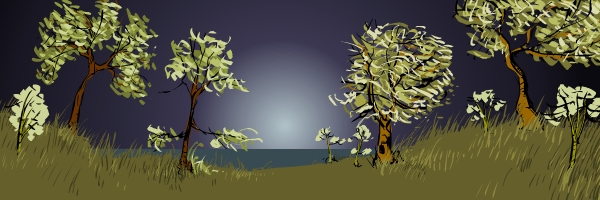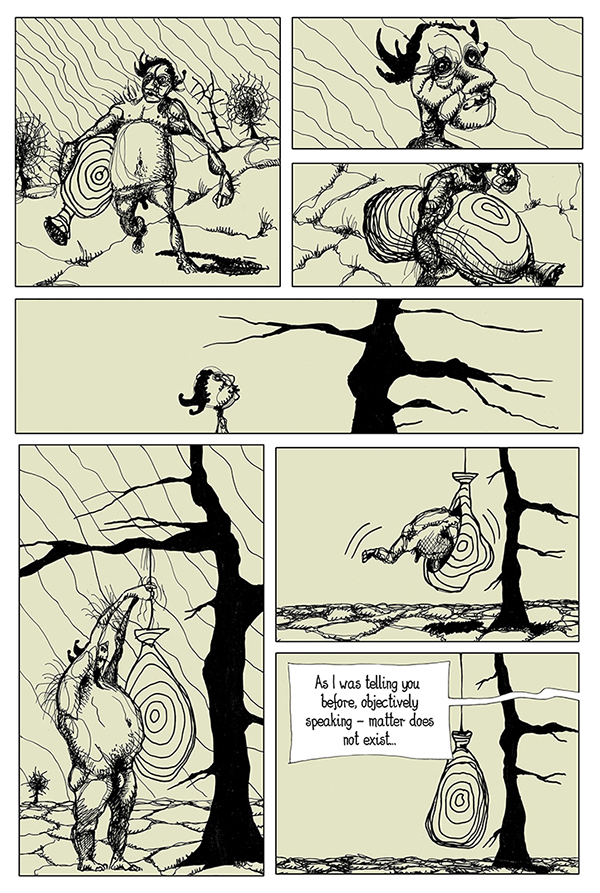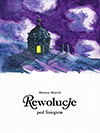Crepax’ Valentina tribute
July 25, 2015


So, guys, here’s the thing.
As you probably know, sometime ago I asked you to send me questions that you think should be addressed in the upcoming Submachine 10. Your response was swift, precise and… uhm… avalanche-like? Not sure if that’s the right expression. Anyway. I’ve collected 112 questions, and as you can imagine, I will not be able to answer them all in the upcoming game. Not even close. Maybe I should just write a book about Submachine. Like a dictionary, or digest.
I’m pretty sure I will cover some of those questions in Submachine 10, however I believe rest of them will have to wait for standalone Submachine games that will come later on. Those, while being stripped from the main storyline, will have plenty of room to discuss all those subjects in question. So, more Submachines, yay.
Here’s the full list of Submachine questions I’m supposed to tackle:
„10 Gnomes in Montaigut-le-Blanc” jest bodaj pierwszą grą, którą Mateusz Skutnik zrealizował w wyniku osiągnięcia przyzwoitego (jak dotąd) wyniku swej akcji w serwisie Patreon.com. W dodatku dostępna jest za darmo (zip), w full HD (1920×1080), ukończona dwa miesiące przed początkowym planem.
Montaigut-le-Blanc to niewielka miejscowość w centralnej Francji, w regionie Owernia. Autor gry bawił tam i zdjęcia robił w lipcu zeszłego roku. Dla tych, którzy zachwycą się widokami na zdjęciach, podał również współrzędne geograficzne: 45.58619 / 3.08952.
Gra jest bardzo prosta, bazująca na pięknych, czarno-białych fotografiach ukazujących widok ogólny i coraz bliższe szczegóły pewnej kamienicy. Przejeżdżając kursorem po obrazku, znajdujemy miejsca aktywne (kursor zmienia kształt), w które kliknięcie pozwala na zbliżenie, podejrzenie szczegółów detalu – czasami jest to ujrzenie pod innym kątem, czasem obrót w miejscu, do tego dochodzi oczywiście także powrót do poprzedniej lokacji / poprzedniego kadru. Gdzieś tam, w szczelinach, dziurach, zakamarkach, schowało się tytułowe 10 gnomów… i nie tylko! Białe, brodate postaci nie zawsze są zadowolone z zakłócania ich spokoju – choć zwykle machają radośnie na nasz widok, czasem pogrożą pięścią.
Kliknięcie w krasnala zapala kolejną lampkę u dołu ekranu, przypominając, ile jeszcze przed nami… A czas upływa! Choć tym razem na przejście całości i wykrycie wszystkich brodaczy nie wyznaczono limitu minut, można wstrzymać upływający czas, by mimo potrzeby oderwania się od ekranu uzyskać lepszy wynik. Można także przełączyć się z domyślnego trybu fullscreen na tryb okienkowy i grę pomniejszyć (choć w ten sposób gracz sam sobie utrudnia zadanie), można włączać i wyłączać ambientową muzykę i dźwięki towarzyszące klikaniu. Czy wycieczka po Montaigut-le-Blanc składa się z mniejszej niż zazwyczaj ilości lokacji (z pewnością nie zerknąłem do wszystkich…), czy też zacząłem dochodzić do wprawy w łowach na małe białe stworki – dość powiedzieć, że „10 Gnomes in Montaigut-le-Blanc” jest pierwszą w swym cyklu, którą ukończyłem w przyzwoitym czasie za pierwszym podejściem.
Trzymamy kciuki za dalsze powodzenie akcji w serwisie Patreon.com i czekamy na kolejne obiecane gry.
Autor: Wojciech Gołąbowski
play | location video | recenzja na Esensji | Liberation review
Today I want to show you the power of what’s going on. That whole Patreon situation. How it liberates me to basically do my creations just for you, and not entire internet (as I don’t have to scratch and claw for ads anymore). Remember the predicted release date for new 10 Gnomes game? September? Scratch that, I made it already and you can play it right now. Not only I’m giving you this game two months before schedule, it’s in full HD, 1920×1080 and, naturally, free. All thanks to people supporting my art on Patreon.
Thank you again.
Some of the most ingenious inventions ever were devised by prisoners from around the world, partly because they have so much time on their hands, and partly because they have no other choice than to improvise. Hence, whether it’s alcohol made out of the most unlikely stuff or ingenious tools to help them escape, those who have nowhere else to go can really put their imagination to work.
Try to escape from a strange environment.
Escape from Jay is Games works along the same lines, only it features a fewer shanks and no soothing voice overs from iconic actors. In essence, however, your main goal is to get out of a weird room filled with old arcade machines, strange computers, and what appears to be some kind of alien hooked to a virtual reality headset. To do that, you must gather useful objects and use them in ingenious ways.
The story is quite simple and straightforward, although that may just be due to the fact that you don’t really find out too much about it along the way. A few notes give you a hint about what’s going on, but you are kept in the dark for the majority of the time. To make matters worse, there are so many questions that need answers, especially when you consider the fact that there is an arcade machine playing Pong by itself for the entire duration of the game.
Combine items to unlock the way further.
In order to continue the story, you have to find certain items that can be used in combination with others to achieve something. Hence, whether it’s a key that opens a certain door or a transistor that can restore a computer’s functionality, everything that can be picked up has a purpose. Not only that, but you can also combine other items with each other, or even use some of them multiple times, such as the knife.
Another great thing about the game is the visual aspect, because although the graphics may look simple and in 2D, the artwork is great and you can tell that the artist took his time coming up with it. The strange machinery and the nice choice of colors create a unique atmosphere, although the soundtrack contributes a lot to the feeling as well.
A beautiful adventure game with plenty to offer.
Although the experience is a bit too short, Escape from Jay is Games is certainly a nice concept, and you can have a lot of fun with it. In addition, the puzzles are ingenious enough to keep you guessing for a while.
Author: Alexandru Dulcianu
This is what the second life on Morfolaki series will look like. The revival, under the Daymare brand will be aptly named Daymare Morphs, and will start in January 2016.

 Gdyby był grudzień, napisałbym że zima znów zaskoczyła drogowców. W czerwcu mogę co najwyżej napisać, że zaskoczyła wynalazców, którzy grają główne role w serialu „Rewolucje” kreowanym przez Mateusza Skutnika.
Gdyby był grudzień, napisałbym że zima znów zaskoczyła drogowców. W czerwcu mogę co najwyżej napisać, że zaskoczyła wynalazców, którzy grają główne role w serialu „Rewolucje” kreowanym przez Mateusza Skutnika.
No bo z tym zaskakiwaniem drogowców to standard. Rokrocznie media wszak rozpisują się o nieprzejezdnych drogach, opóźnionych autobusach i pociągach a także miejskich chodnikach, po których nie sposób chodzić. Nieprzejezdne ulice, nieodśnieżone chodniki… To wszystko mamy też w dziewiątym tomie „Rewolucji” z dopiskiem „Pod śniegiem”. A nawet więcej. Bo w najnowszym skutnikowym komiksie jest jak w jednym z wierszy Marcina Świetlickiego. „Śnieg spadnie i zasypie wszystko”…
Aż po czubki dachów. Właściwie jedynie one sterczą znad białego puchu, z którym próbują sobie radzić kolejni wynalazcy zjeżdżający – by myśl techniczna ewoluowała – do namalowanego miasteczka. Jak Von Trompp (z dyplomem zdobytym w Karlsgut w roku 1876), który testował właśnie swój prototyp maszyny do odśnieżania. I wszystko byłoby dobrze, gdyby nagle nie zahaczył o kilka wystających balkonów.
Osadzając “Rewolucje” pod śniegiem Skutnik miał okazję, by pokazać całą masę ciekawych patentów. Pokusił się np. o połączenie ogrzewanego baraku ze śnieżnymi rakami. Na innej z plansz dostajemy szalone ustrojstwo będące zestawieniem czegoś na kształt portowych dźwigów z tarczami ryjącymi przed laty bełchatowskie złoża węgla brunatnego. Do listy wynalazków dołóżmy „perforator ręczny”, „stabilizator materiałów radioaktywnych” oraz kulę szpiegowską jeszcze z czasów wojny. A że w zanadrzu autor skrywa dwóch szaleńców – profesora Everetta specjalizującego się w podróżach w czasie oraz profesora Flombeura mającego do czynienia z teleportacją – ma już wszystko, by stworzyć zakręcony scenariusz. Może też stawiać pytania jak to, czy podróż w czasie wyklucza podróż w przestrzeni, może też poddawać w wątpliwość, że zerwanie balkonów było tylko i wyłącznie przypadkiem…
Ładnie w śnieżnych krajobrazach prezentują się jego wielkogłowi bohaterowie. Pięknie też wyglądają wielbłądzie zaprzęgi. Świetnym żartem wplecionym w fabułę jest protest grupy śpiących, którzy domagają się, by ich domów nie odśnieżać aż do wiosny. Zimowa pora roku wymusiła niejako kolorystykę najnowszego tomu serii. „Rewolucje pod śniegiem” to zimne fiolety, błękity i szarości przełamane brązami i czerwieniami, gdy wchodzimy do ukrytych pod grubą, śnieżną pierzyną wnętrz budynków.
Autorowi zarzucić mogę tylko jedno. Po lekturze dziewiątego tomu skutnikowych „Rewolucji” mam duży niedosyt. Nie dlatego, że to słaby komiks. Mam niedosyt, bo takich historii chce się więcej. A „Rewolucje. Pod śniegiem” to „tylko” 46 plansz.
Mamoń
So I’ve been thinking.
Since the browser-based game market is dying, (at least for me), why shouldn’t I ditch it entirely. This process in my head actually started two years ago when I begun creating HD versions of Daymare Town and Submachine, which became games playable on PC and MAC desktops, with all it’s perks, like being able to create better immersion through full screen gameplay, addition of original soundtracks in separate mp3 files etc. I expect the process to let me also switch platforms, so I will no longer be constricted only to flash games. But more on that some other time.
This year the sentiment grows stronger, with the advent of my Patreon campaign and diminishing returns from ad-based browser-gaming. I don’t have to cater to countless online masses of anonymous players anymore. I just need to deliver to few thousands of you who genuinely like what I do to the extent of following me on social media. That’s all. That’s you guys – reading these words right now. And don’t worry. If you’ve been able to play my games in the past – you will be able to play them in their new form. Flash wasn’t compatible with handheld market anyway. And those games which were free will remain free. There will be an online, free version of Submachine 10: the Exit, alongside paid, fullscreen desktop version (free for all my patrons).
The first symptom of the inevitable switch from browser to desktop gaming will be newest episode of 10 Gnomes, as it’s the first game on my release list. On my Patreon page, one of the rewards is getting all games I create this year in HD for free. That will probably include Submachine 10, 10 Gnomes and Where is 2016? at the very least. And I noted that 10 Gnomes will not be scalable to full screen since it’s not vector graphics and will look bad when rescaled (pixelated). But then I thought to myself – wait, why am I thinking in terms of browser restrictions. Why not create just larger 10 Gnomes game. Like, already in HD and just let people download it for free instead of releasing it as a browser game. And that’s exactly what I’ll do, come August.
Take a look at the screen below. Click on it to see it in it’s full, 1920 x 1080 glory. Doesn’t it look nice?